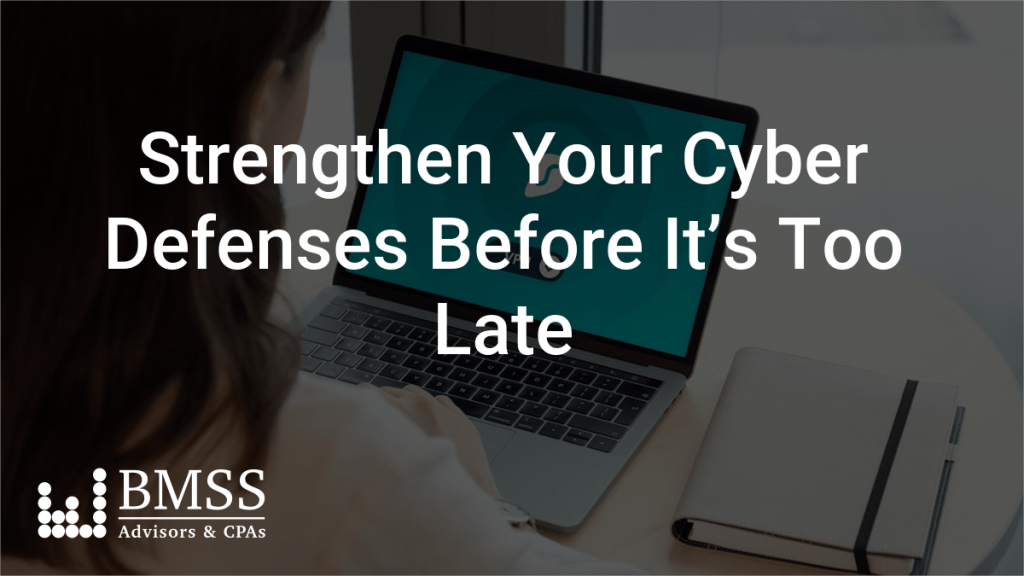
Cybersecurity is not just an IT function—it’s a business imperative. Today’s attackers target people, processes, and technology, exploiting any weakness they can find. The difference between companies that survive and those that don’t often comes down to one principle: proactivity versus reactivity.
A proactive organization anticipates threats, tests its defenses, and addresses risk before it’s exploited. A reactive organization scrambles after the damage is done—paying in downtime, data loss, and reputation.
Here are the most impactful steps every organization should take to move from reactive firefighting to proactive resilience.
1. Start with a Comprehensive Security Assessment
You can’t protect what you don’t understand. A full-spectrum assessment—covering on-premise systems, perimeter defenses, and cloud environments—is the foundation of any serious cybersecurity strategy.
- Identify vulnerabilities and misconfigurations before attackers do.
- Evaluate control maturity against standards like NIST or CIS.
- Prioritize remediation based on actual business risk, not assumptions.
Ask yourself: When was the last time your entire environment—on-prem, cloud, and perimeter—was independently assessed for risk?
2. Control Access, Protect Identities
Most breaches begin with compromised credentials.
- Require Multi-Factor Authentication (MFA) for all users and administrators.
- Limit privileges to only what’s necessary—no standing admin rights.
- Standardize password managers and enforce unique, complex passwords.
Ask yourself: Could a single compromised account in your organization grant an attacker access to everything else?
3. Secure Core Infrastructure
Your systems, endpoints, and networks are the backbone of your business—keep them hardened.
- Update everything automatically—outdated software is an open door.
- Encrypt and monitor endpoints using modern EDR solutions.
- Segment networks and eliminate legacy authentication methods.
Ask yourself: If ransomware struck today, how quickly could you isolate affected systems and continue operations?
4. Defend Against Phishing and Communication Threats
Email remains the top entry point for cyberattacks.
- Deploy advanced email protection with DKIM, DMARC, and conditional access.
- Train employees regularly—awareness is your first and most reliable defense.
Ask yourself: Would your employees recognize a sophisticated phishing attempt if it landed in their inbox today?
5. Protect Data and Manage Vendor Risk
Your data—and your clients’—are your most valuable assets.
- Centralize and classify data to control access and reduce sprawl.
- Vet vendors thoroughly—require SOC 2 or ISO attestations and enforce contractual security obligations.
Ask yourself: Do you know exactly where your sensitive data lives—and who outside your company can access it?
6. Make Security Part of Your Culture
Technology alone can’t stop every threat; people must take ownership.
- Embed security into onboarding and training.
- Define clear roles and escalation paths.
- Model leadership accountability—security starts at the top.
Ask yourself: Would every employee know how to report suspicious activity or a potential breach without hesitation?
7. Measure What Matters
You can’t improve what you don’t monitor.
- Continuously monitor for threats and review control performance.
- Document compliance and improvements to demonstrate accountability.
Ask yourself: Are you tracking meaningful security metrics—or just hoping nothing bad happens?
8. Partner with Experts
Building a 24/7 internal security program is costly and complex.
- Leverage a managed cybersecurity provider like Abacus Technologies for continuous monitoring, rapid response, and scalable protection.
- Engage third-party assessments for unbiased insights and compliance validation.
Ask yourself: Do you have true visibility across your environment—or are you relying on tools without the expertise to interpret the signals?
The Bottom Line
Cybersecurity isn’t about perfection—it’s about resilience. Secure what you can afford to, and build resilience around the risk that remains.
Reactive organizations wait for a breach to prove their weakness. Proactive organizations identify those weaknesses first—and act before adversaries can. The difference is preparation, visibility, and discipline.
If you’re ready to strengthen your defenses, please contact Abacus Technologies at (844) 443-5900 or visit our website to speak with a cybersecurity professional.
